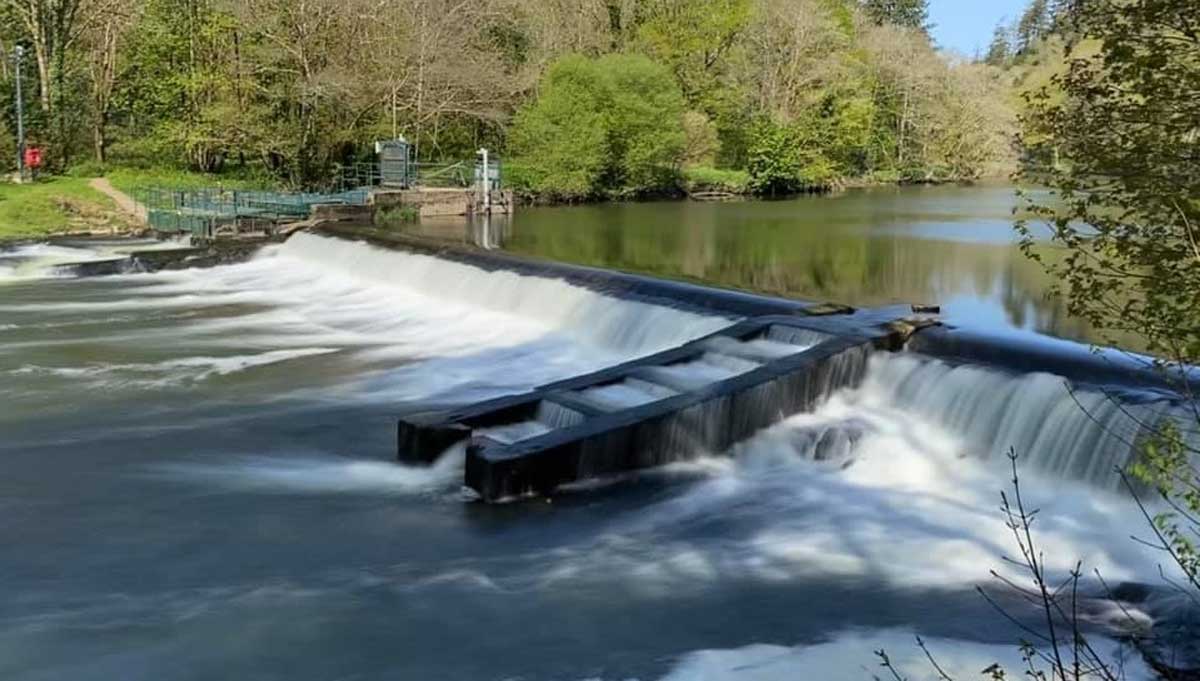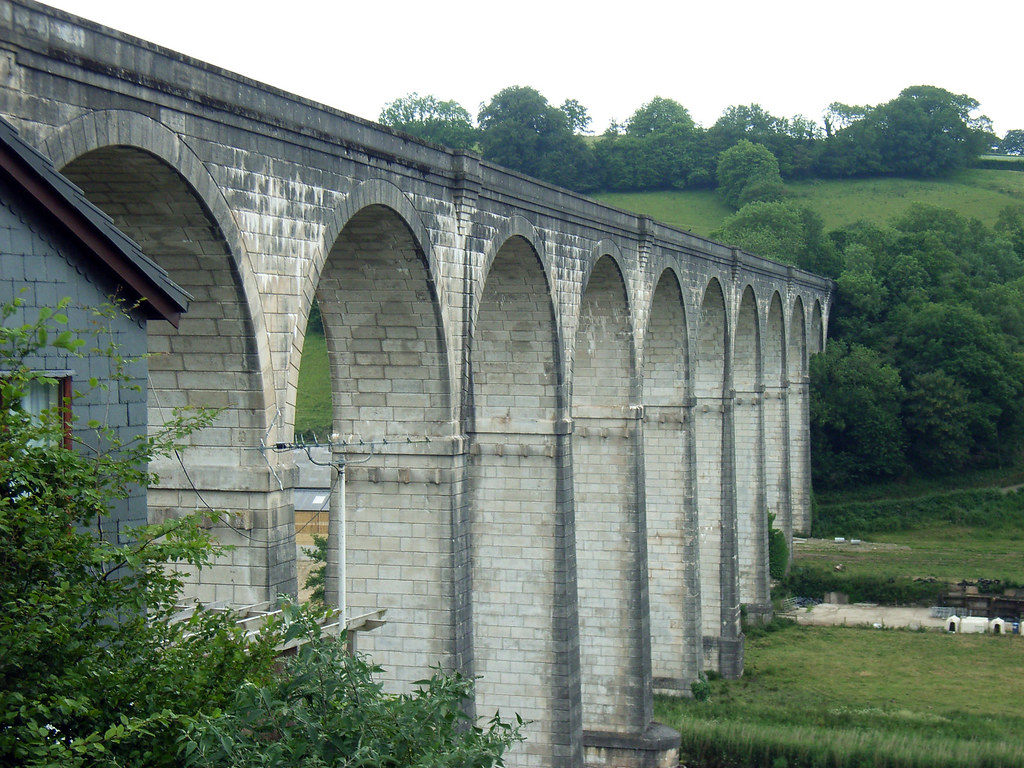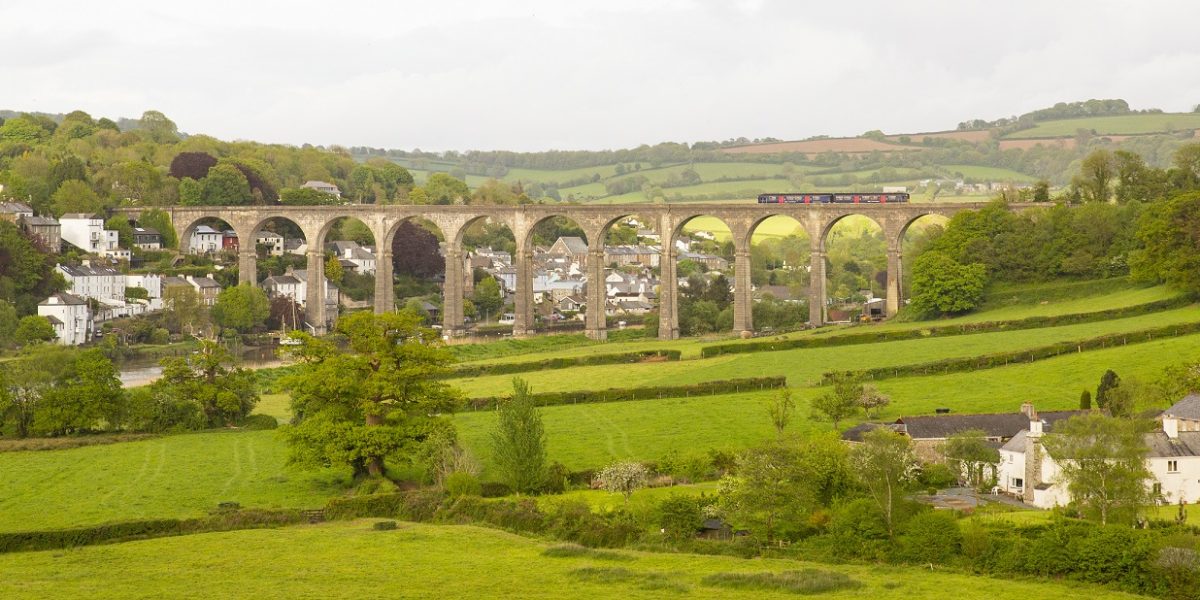by Sarah Bartlett, Tamar Marketing
In this blog, we take a trip along the scenic Tamar Valley line from Gunnislake to Plymouth, stopping off along the way at Calstock and the Bere Peninsula. The journey takes us past the Dockyard and Devonport until finally, the train rolls sedately into Plymouth station.
Welcome to Gunna’s Stream
Until 1820, the old mining village of Gunnislake was known as Williams Town, after the wealthy Williams family of Scorrier who owned the nearby Old Mine. It was renamed Gunnislake after a copper mine that opened in 1796 and its stream that ran from the nearby downs into the River Tamar. Gunnis is a misinterpretation of the Cornish word for an open mine working ‘gunna’. And ‘lacu’ or ‘lake’ is an alternative word for stream in Old English. So, the origin of the name is Old English: a personal name + lacu, meaning Gunna’s stream
Despite the Old English origins of its name, Gunnislake lies just across New Bridge on the Cornish side. It’ll also the starting point for the 15-mile long Tamar Valley Line rail adventure.
A Bloody Battle
New Bridge at Gunnislake is a Scheduled Ancient Monument and was built in 1520. Despite its peaceful, rural setting, it was once the site of a bloody civil battle:
In 1644 Parliamentarian forces faced off against the Royalists. Whilst both sides suffered losses, the Royalists were defeated with some 200 men either killed or taken prisoner. One can almost imagine the cries of bloodied and dying men as they fell from its high parapet into the waters below.

Surrounded on all sides by fine English countryside, Gunnislake offers some stunning country walks, riverside walks, and woodland adventures. Rise a little further up the hill with the village at your back, and you’ll be treated to the most fabulous views of the Tamar Valley, the distant twin bridges, and Plymouth Sound.

Watch out for the Gunnas
The village has a rich mining heritage. If walking or cycling in the locality you’re bound to encounter old mine workings. Although invariably fenced off for safety, these yawning black chasms opening into the hillside or dropping away underfoot are a stark reminder of the once noisy, smelly, and dangerous industry. An industry that dominated the area for hundreds of years, employed over 7000 people, and satisfied 50% of global demand for arsenic from one of the richest mining areas in Europe.
For those exploring the Tamar Valley, Gunnislake train station is the northernmost terminus and provides both car and bike parking. The Line connects to Plymouth via Calstock and Bere Ferrers and Bere Alston. All three are worthy stop-off points.

Calstock
The picturesque village of Calstock, or Kalstock in Cornish, is the first stop on the Line and definitely worthy of a visit. The village itself is a real riverside treat with its jumble of cottages clinging to the slope of the valley, boat-yards, and quay looking out over the surrounding pastureland and woodland. The village is incredibly old too. Evidence of human settlement has been discovered at Calstock dating back to Roman times. Indeed, a Roman Fort was discovered near the Church back in 2008. In fact, settlers across the ages have been attracted to the valley because of its rich source of minerals.
For more about the Fort, have a look at this article by local chap Dr Chris Smart of Exeter University

Although now a quiet, peaceful idyll, once upon a time all the mineral produce of East Cornwall was shipped through Calstock’s quays, along the river, and onward to the sea. The river would have been heaving with craft. The quay bustling with men and noise. But then Calstock’s waterway-orientated way of life succumbed to the railway when in 1908 it gained a direct rail link with Plymouth. Today its quiet waters are dotted with sailboats, rowboats, and other pleasure craft. If you do stop off in Calstock for some fresh air and a stretch of the legs, you may even spot the resident swan family. If this young cygnet survives the winter, it will be the first in several years.
An Acrimonious Past
Calstock’s stunning viaduct bridges the Tamar River and took three years and seven months to build – some twenty-seven months longer than originally anticipated, largely due to an acrimonious relationship between the contractor and engineers. When it opened in 1908, it had swallowed up more than half the total estimated cost of building the four and a half-mile stretch of rail linking Bere Alston with the East Cornwall Mineral Railway just above Calstock.

Across the bridge from Calstock, the train passes into Devon and onto the magical Bere Peninsula.
If you hope off the train at Bere Ferrers, or Bere Alson you’ll feel as though you’ve stepped back a generation or two to a slower pace of life. Sandwiched between the Rivers Tavy and Tamar, the Bere Peninsula is a haven for wildlife, especially birds. From the peninsulas many vantage points, you’re bound to spot gulls, egrets, cormorants, geese, and ducks. You might even see a kettle of red kite or a heron fat with fish haul himself into flight!
Silver and Lead
Both Bere Ferrers and Bere Alston are sleepy and soothing settlements that offer a gentler pace of life due in part to a complete lack of through traffic. Folk simply don’t drive by on their way to somewhere else. Meaning quiet country lanes.
It wasn’t always that way. The Bere Peninsula supported a thriving silver and lead mining community for hundreds of years. The Tamar River would have been thick with boats transporting silver, timber, and oak bark. Then, when the direct rail link with Plymouth opened, the peninsula became a very popular excursion center and stayed that way right up to the outbreak of war. In fact, it is said that on the day the rail line opened as many as 30 people presented themselves for breakfast at the only inn in the village. The elderly landlady was run off her feet and the inn’s resources were overwhelmed. Just a week later and after some nifty modifications, the inn became a hotel and remains so to this very day!
The train offers a great vantage point from which to consume picture-postcard views of fields, trees, cottages, lanes, and the River Tamar herself. In case you’re wondering Bere is a Celtic word meaning spit of land which is exactly what the Parish of Bere Ferrers is.
What’s in a Name?
The word ‘Ferrers’ refers to the family who, during the reign of Henry II, became Lords of the manor. Whereas it’s believed that the name Bere Alston evolved gradually over hundreds of years from Alphameston, then Berealmiston, to Berealbeston, then Beeralston and finally, Bere Alston.
Back onboard the train at Bere Alston station, the wheels grind slowly but surely away from the station, and the train makes its way along a massive embankment that when built, absorbed some 140 million cubic yards of rock!

Then onward through a 63 ft deep cutting to Bere Ferrers where the line leaves the peninsula and cross the Tavy bridge with its eight iron bowstring braced girders, at the mouth of the River Tavy.
A little further one, the train might pick up some speed along a half-mile embankment at the water’s edge known as the Tamerton Flat. At this point, spectacular views of Brunel’s Royal Albert Bridge dominate the big picture windows of the carriages, before the train turns inland towards Devonport and Plymouth.
The Royal Albert Bridge was designed by Isambard Kingdom Brunel and opened in 1859 shortly before his death. The bridge still carries the Cornish mainline railway today and was joined in 1961 by the Tamar Bridge. This more modern structure was built to cope with the increasing amount of road traffic in the area.

And Finally to Plymouth, Britain’s Ocean City
Finally, after a delightful 45-minute trip, the train arrives at Plymouth Station. Once there, a short walk will take you into the town center to enjoy some shopping or a wander down to the Barbican to see the Mayflower Steps. Whilst in Plymouth, a visit to The Box is a must. The Box is a major new museum, art gallery, and archive for Plymouth and the South West and offers a fascinating way to spend a couple of hours examining Plymouth’s eclectic mix of maritime history and art. Plymouth has a great deal to offer. Far too much to encapsulate into a few sentences here. We suggest that you have a look at the Visit Plymouth website to help you plan your visit, before rejoining the train for the homeward journey.





